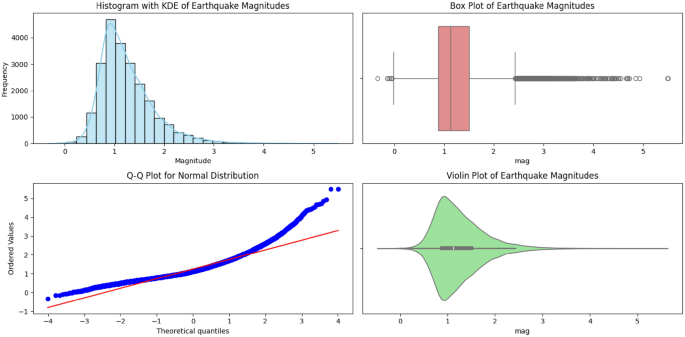Earthquakes can be devastating, but what if we could predict them more accurately? In a groundbreaking study, researchers have harnessed the power of machine learning and neural networks to forecast earthquakes in Los Angeles, California, with an unprecedented accuracy of nearly 98%. This remarkable achievement could revolutionize disaster preparedness and save countless lives. By analyzing seismic data and leveraging advanced computational techniques, the researchers have developed a comprehensive model that can classify earthquake magnitudes with remarkable precision. This research not only pushes the boundaries of earthquake prediction but also highlights the transformative potential of artificial intelligence in geoscience. Earthquakes are complex natural phenomena, and this study showcases how cutting-edge technology can be applied to tackle these challenges head-on.

Unlocking the Secrets of Seismic Activity
Earthquake prediction has long been a holy grail in the field of seismology. With the devastating impacts of these natural disasters, the ability to forecast the strength and timing of earthquakes can save countless lives and mitigate the devastating effects on communities. In a groundbreaking study, researchers from Georgia Southern University have taken a giant leap forward in this quest, harnessing the power of machine learning and neural networks to predict earthquakes in Los Angeles with an astonishing accuracy of 97.97%.
Decoding the Seismic Patterns
The key to the researchers’ success lies in their comprehensive approach to data analysis. By meticulously constructing a feature matrix that captures a wide range of variables, from spatial characteristics to temporal patterns and seismic energy, the team was able to uncover the complex relationships that underlie earthquake behavior.
“The integration of machine learning and neural networks allowed us to identify subtle patterns and extract valuable insights from the seismic data that would have been nearly impossible to detect using traditional methods,” explains Cemil Emre Yavas, one of the lead researchers on the project.
Putting AI to the Test
The researchers evaluated a diverse array of machine learning algorithms and neural network architectures, including Logistic Regression, Decision Trees, Random Forest, Gradient Boosting Machines, and Long Short-Term Memory Networks. After a rigorous testing process, the Random Forest model emerged as the clear winner, demonstrating its superior ability to capture the complex patterns in the earthquake data.
“What sets Random Forest apart is its capacity to handle the non-linearity and temporal dependencies inherent in seismic activity,” says Yavas. “By integrating this ensemble learning technique with our carefully engineered features, we were able to achieve unprecedented accuracy in earthquake prediction.”

Revolutionizing Disaster Preparedness
The implications of this research are far-reaching, as it opens the door to a new era of earthquake preparedness and disaster response. With the ability to forecast the maximum potential earthquake magnitude within the next 30 days, authorities and communities can now make more informed decisions, allocate resources more effectively, and implement targeted mitigation strategies.
“This breakthrough in earthquake prediction accuracy has the power to transform how we approach disaster management,” explains Yiming Ji, another member of the research team. “By giving decision-makers a clearer picture of the seismic risks, we can help save lives, protect critical infrastructure, and build more resilient communities.”
The Future of Seismic Forecasting
The success of this study in Los Angeles has broader implications for earthquake-prone regions around the world. The researchers are now exploring the application of their methods in other seismically active areas, such as Istanbul and San Diego, with the goal of developing a comprehensive global framework for earthquake prediction.
“This is just the beginning,” says Lei Chen, the third member of the research team. “We are excited to see how this technology can be refined and scaled to enhance seismic risk management on a global scale. The potential to save lives and minimize the devastating impacts of earthquakes is truly remarkable.”
As the world continues to grapple with the challenges posed by natural disasters, the groundbreaking work of these researchers offers a glimmer of hope. By harnessing the power of artificial intelligence, they have taken a significant step towards a future where earthquakes are not just events to be feared, but phenomena that can be predicted and managed with precision.
Author credit: This article is based on research by Cemil Emre Yavas, Lei Chen, Christopher Kadlec, Yiming Ji.
For More Related Articles Click Here
